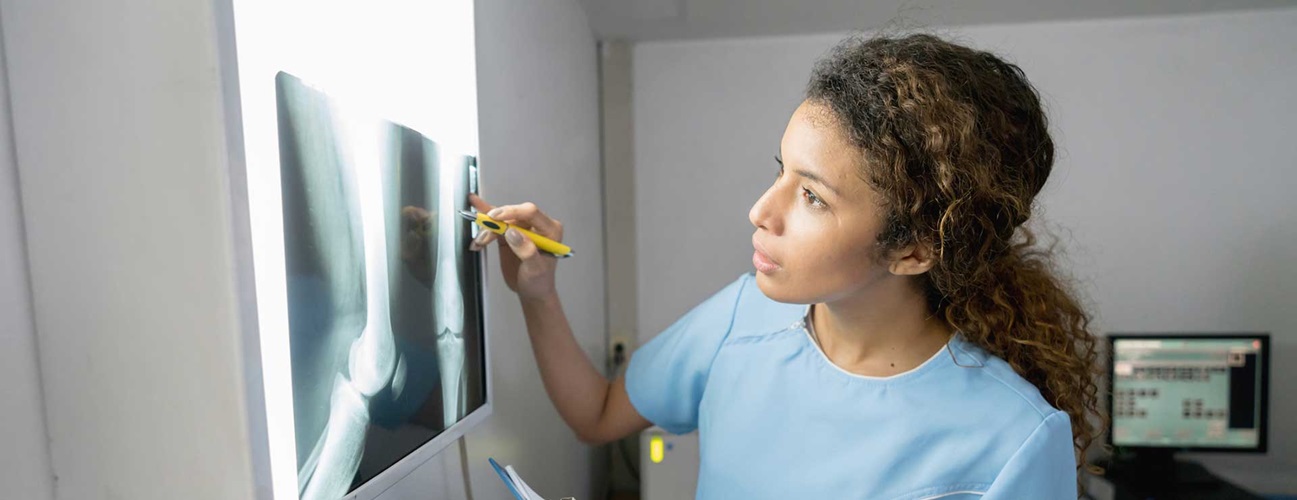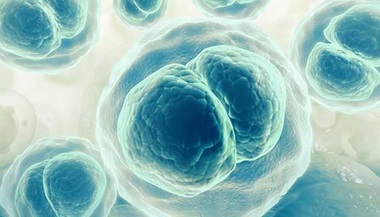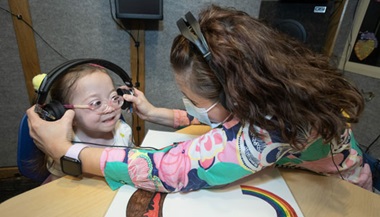Skeletal Dysplasia
What You Need to Know
- Skeletal dysplasias are estimated to affect 2.4 per 10,000 births.
- Some forms of skeletal dysplasia can be diagnosed by ultrasound before birth. Severe types may be fatal.
- Treatment for skeletal dysplasia varies depending on the child’s specific diagnosis and symptoms, but may include careful observation and clinical exams, imaging and possible surgery.
Skeletal Dysplasia Overview
Skeletal dysplasia is the medical term for a group of about 400 conditions that affect bone development, neurological function and cartilage growth, including its most common form, achondroplasia.
Signs include abnormal growth in the spine and skull, and in the long bones of the arms and legs, which can result in the individual being short in stature. Care teams for patients with skeletal dysplasia often include experts in orthopaedics, neurosurgery, genetics, otolaryngology and ophthalmology.
Skeletal Dysplasia Symptoms
Conditions associated with skeletal dysplasia include:
- Cervical spine instability
- Kyphosis
- Spinal stenosis
- Leg bowing or knock knees
- Stiff joints and premature arthritis
- Clubfoot
Additional symptoms of skeletal dysplasia may include:
- Short stature
- Large head with a prominent forehead
- Long trunk, shorter arms, and legs
- Brittle teeth and bones
- Hearing loss
- Cleft palate
- Vision problems
- Hydrocephalus
- Cervical medullary compression
Skeletal Dysplasia Causes
Skeletal dysplasia can be the result of an inherited or spontaneous genetic mutation.
Skeletal Dysplasia Diagnosis
Typically, the signs of skeletal dysplasia are noticed by the child’s parents or pediatrician during the first year of life as the child’s head grows out of proportion to his or her body and limbs.
To begin, your doctor will conduct a thorough physical of the child and will ask for a detailed family and patient history. The following procedures may be part of the physical:
- Depending on your child’s age, your pediatrician will probably order a series of X-rays and possibly a CT scan.
- Sometimes an ultrasound of the brain is also recommended.
- If your child is older than 6 months, an MRI scan may be able to provide better images of the brain and spinal cord.
- The doctor may also order an eye exam.
Skeletal Dysplasia Treatment
Depending on the results of the imaging studies, your doctor may refer you to a pediatric neurosurgeon or orthopaedist for treatment.
The course of treatment for your child should take into account the full impact of symptoms on your child as an individual, including changes in activity or school performance.
In the optimal treatment center, multiple specialties take part in reviewing the cases of children with skeletal dysplasia. Neurosurgeons, neurologists, pediatric orthopedists pediatric ophthalmologists, radiologists, geneticists, and pulmonologists, among others, join together to develop the treatment plan and determine if and when surgery is appropriate.
Your child’s treatment plan for managing skeletal dysplasia will vary, depending on his or her condition, and may include:
- Treatment for hydrocephalus
- Instrumentation and fusion for spinal stenosis or instability affecting the cervical or lumbar region. The pediatric neurosurgeon removes the bone(s) constricting the spinal cord or brain stem. Working in conjunction with orthopaedic surgeons, the neurosurgeons support the patient’s spinal column with metal rods.
- Joint replacements of the knees or hips due to severe arthritis
- Limb-lengthening procedures
- Lower extremity osteotomies (cuts in the bone to correct alignment)
After surgery, follow-up care is extremely important in tracking your child’s recovery process. The pediatric neurosurgeon will schedule follow-up appointments to make sure your child is making progress. The ideal team will be able to continually monitor the patient’s well-being through childhood and adolescence and into adulthood.





